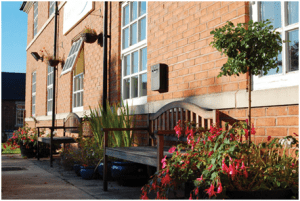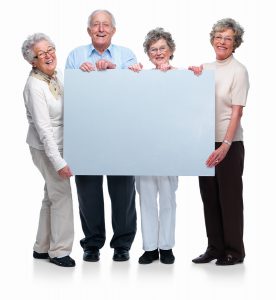Each week, Dr. Mauk shares thoughts relevant to Baby Boomers that are aimed to educate and amuse.
How Caregiving Has Become a Routine Part of American Life
By Tess DiNapoli
America’s caregivers support the social and economic foundations of our society. As the population ages, more and more elderly adults need extra care on a regular basis. To address these needs, a significant and growing number of people are serving as caregivers to family members and others in their communities. In addition, we continue to face the challenges of COVID-19, which has caused many Americans to make the choice to keep their elderly relatives at home and provide care for them. These realities are making caregiving a more routine part of American life.
Who are the caregivers?
The number of Americans providing care for family and other members of their communities has grown over the last five years. According to an AARP study, 43.5 million adults in the United States are caregivers. The vast majority of those caregivers, 34.2 million, are providing care for adults 50 and over.
A substantial number of caregivers are also caring for more than one person, the majority of them being women, as they’re likely looking after both young children and their aging parents.
Multigenerational households
One of the growing realities in America is that many households span multiple generations. Older adults want to stay out of congregate senior care facilities as long as possible, and adult children often become their caregivers. To lessen the burdens of caregiving, a number of these adult children are choosing to bring their parents to live in their own homes with them.
Challenges of caregiving
Caregivers face a multitude of challenges as they provide support to older adults. The time commitment of caregiving is substantial, the financial strain can be significant, especially for unpaid caregivers, and the emotional stress of caring for others can affect the mental health and well-being of the caregiver.
Time challenges
The Family Caregiver Alliance indicates that family caregivers spend an average of over 24 hours providing care each week. This time commitment is on top of the demands of jobs, children, and social obligations. The number of hours a caregiver devotes to caregiving increases when the care recipient lives in the same household. The time commitment also increases with the age of the care recipient.
Financial challenges
When a caregiver is spending a significant number of hours providing care, they are not as available for extra work hours or more work responsibilities. As a consequence, caregivers are often forced to pass up promotions or cut their work hours, diminishing their own earning potential. These financial decisions can have long-lasting effects, potentially lowering social security benefits and retirement savings.
Mental health challenges
The American Psychological Association has identified several mental health concerns that are common among those providing senior care. Depression, anxiety, and guilt are some of the most prevalent challenges to the mental well-being of caregivers.
Benefits of caregiving
Despite these significant challenges, there are benefits to more routine caregiving in American life. Caregivers are less isolated with a growing number of other adults facing the same burdens. As caregiving becomes a more normal aspect of adult life, communities of caregivers help to ease some of the burdens and challenges they all face.
In addition, seniors benefit from remaining at home to receive care and support. They are not constrained by the schedules of care facilities and they can retain a degree of independence, which helps with mental well-being. Remaining in familiar surroundings can ease the strain and anxiety of aging as well.
Caregivers can help their care recipients to maintain their own mental health. One of the risks to elderly adults as they age is social isolation. They are not as able to get out of the house and socialize with their peers, whether due to physical limitations, no longer being able to drive themselves, or both. Caregivers provide much-needed companionship and can keep those in their care from getting lonely and depressed.
There are financial benefits as well. The costs of institutional care for the elderly are often prohibitive. Providing care to older adults in their homes is a cost-effective alternative for those who do not need around-the-clock care.
The reality is that the largest population in America, the baby boomer generation, is now aging. The care needs of these older adults will continue to be an increasing element of American society over the coming years, and we’ll need to prepare ourselves to meet that challenge as well.



